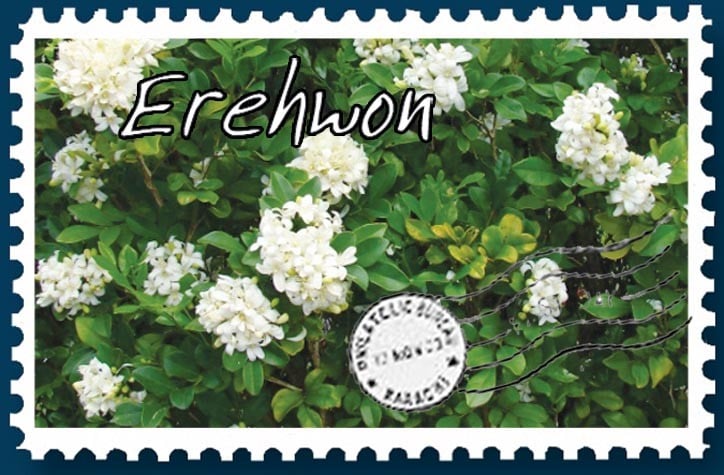
A plant that delights, calms and transports everyone who experiences it

It is 5am and Bitya, our black Labrador, and I are walking down the street in Lahore for our morning outing. The rain is pouring down and I balance an umbrella in one hand and the dog’s leash in the other. I notice that Bitya doesn’t particularly enjoy the pouring rain, so she is also taking shelter under my umbrella. It feels a bit silly, to be the only walker around when even the fajr namazees have disappeared from their regular walk to local mosque.
Putting the silliness aside, the rain enlivens our verges and trees; our stormwater drains flood and pools along the roads transform my neighbourhood. It all becomes excitingly lush green and teeming with life.
In this verdancy, one can expect all sorts of surprises. Once I rescued a freshwater turtle that had washed up outside our gate and was helplessly upside down waving its flippers in the air. Another year, I had stepped over a small slithering snake. But these creatures are almost gone now. Even chance encounters are rare, as our open woodland field nearby has been converted into army flats. Despite the resultant loss of natural diversity, I still wonder what I might spot as I walk out this wet morning.
What I encounter is the arrival of the majestic kamini. Princess Kamini I like to call it. Kamini is a most exquisite and alluring presence on our verges and there are many individuals all over the neighbourhood. Also called Marva in Urdu, Orange Jasmine in English, this plant is native to South Asia and grows with perfect ease in Lahore. Murraya paniculata, kamini’s Latin botanical name tells me that it belongs to the citrus family.
Grandmothers in the 1980s of Lahore Cantonment had clearly recognised the beauty of the kamini plant and lovingly planted them copiously in our area. Now they are woody shrubs of considerable size. A few times a year, the shrubs burst into the most elegant blooms with clusters of white flowers held in small bouquets. A large garden and house can be filled with enticing perfume from just one single bush for weeks at a time when it is in flower.
At night, the shrub is gorgeous if seen without streetlight as the blooms glow white, giving off a heady perfume that is both powerful and delicate at the same time. It is like an announcement that a princess is approaching and she exudes orange blossoms mixed with jasmine perfume.
Later in the season, these same blooms will turn into bright orange berries like beads and give their own pop of colour as they peak out of the lime green foliage.
Our kamini bush is now almost two decades old and has come into maturity and full size. It’s canopy reaches above our boundary wall, having been planted just on the street side verge of our house.
Blooming suddenly on a rainy dawn, confetti-like showers of white flowers are spread all over the bush, displaying their beauty to those inside our garden. But the perfume is what is even more alluring. It floats into our open windows and uplifts everyone’s mood. The wet morning heightens its perfume as the aromatic compounds in the flowers cling to moisture droplets and are carried everywhere in the saturated air.
Gardeners in Lahore have always understood the sensory experience of scent in the garden. While itself ephemeral, scent is an essential part of garden design. It is said to have a powerful effect on the human body, mind and memory and it is no surprise that scent is a core element of garden artistry and experience. Kamini is a wonderful example of this transporting effect on the human being. What it must do to pollinators like moths, bees, and butterflies one can only imagine.
Once I was reading about the history of the hanging gardens of Babylon. The writer had pointed out that gardeners know they are planting legacies, whether kings or humble homeowners. Like the famed hanging gardens of Babylon that have now disappeared, even a domestic garden really comes into its own after the active gardener’s lifetime. It is the children and grandchildren of a gardener who are often the beneficiaries of the beauties that fruit and flower in a garden.
So as Bitya and I trudge back home from our walk, I bless the grandmothers, the nannis and daddis of my neighbourhood. In their home and garden-making they had planted these delightful kaminis some three or four decades ago. They have left a legacy that delights, calms and transports those who walk out and experience the allure of this aristocrat plant of the sub-continent. Perhaps that is their enduring message on how to live a serene and satisfying life…